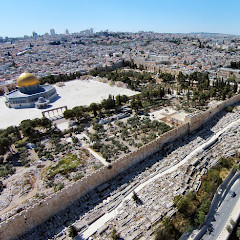Top Archaeological sites in Rome, Italy
Top Rated Archaeological sites in Rome
Top Reviewed Archaeological sites in Rome

Temple of Apollo Palatinus

Il Tempio dei Dioscuri

Temple of Divus Julius

Temple of Divus Julius

Basilica Sotterranea di Porta Maggiore

Temple of Vesta

Basilica of Saint Michel the Archangel on the Via Salaria
Reviews

Nice site to visit and the history behind this monument. Where sacred fire or eternal flame of Rome was kept and the vestayles protected it.





La basilica è un piccolo meraviglioso tesoro. Scoperta tramite un documentario televisivo, ho avuto la fortuna di poterla visitare a distanza di un anno. Purtroppo sono poche le date di apertura annuali, ma è comprensibile visto che , per accedervi è necessaria una guida. L’archeologa che ci ha accompagnati, divisi in 2 gruppi da 7 persone, è stata molto preparata, entusiasta e coinvolgente!
























Un capolavoro, ovviamente, poco conosciuto e visibile grazie a rare aperture occasionali; una basilica a tre navate con abside centrale, la cui pianta è stata scavata direttamente nella roccia e terminata con getto c.d. “a sacco” di conglomerato cementizio e selci; duemila anni di storia e di enigmi ancora da svelare. I soffitti e le pareti sono copiosamente rivestiti di stucchi, bianchi, con scene mitologiche con tema il destino dell'anima e i segreti delle iniziazione ai Misteri, della metempsicosi, cioè della trasmigrazione delle anime, una credenza di derivazione Pitagorica.



















































Ringraziamo quel treno sulla Roma -Cassino che circa un secolo fa sprofondando rimase in bilico su una voragine aperta proprio sopra questo tesoro ipogeo svelandone l'esistenza. Ci vollero altri 40 anni quasi perché si pensasse di tutelare un sito così importante, costruendo intorno un'armatura di cemento che lo preservasse da infiltrazioni e vibrazioni, purtroppo sacrificando il corridoio a gomito con volta a botte decorata che dal giardino doveva condurre al vestibolo e quindi alla basilica (già costruita dalla famiglia degli statili sotto terra). Si è pensato a un ninfeo, a un sepolcro ma lo studio delle magnifiche decorazioni e la rivelazione della pianta hanno potuto attribuire questa costruzione a una basilica tipicamente romana, di duemila anni, con ambiente unico a tre navate, abside semicircolare e volta a botte.... tutto riccamente decorato con stucchi e anche dipinti parietali e con un bel pavimento a mosaico bicromatico. La destinazione è ancora incerta tra il culto neopitagorico (per alcuni elementi tipici fortemente richiamati nelle ricche decorazioni) e il culto funerario (sono evidenti i segni di una spoliazione che ha eliminato quello che poteva essere un altare, un'ara o qualcosa di rituale). Indescrivibile la bellezza dei decori che purtroppo si possono visitare solo a distanza per non compromettere l'equilibrio del microclima). In un box esterno alcuni pannelli aiutano nella comprensione del sito. Ambiente piccolo ma ben illuminato con una luce blu che esalta la colorazione originale del catino absidale. Si accede raramente e solo si prenotazione con visita guidata, prestando attenzione (gruppi di massimo dieci persone). Informatevi sul sito della soprintendenza speciale di Roma per le eventuali visite e NON venire con marsupi, borse e zaini per non rischiare di compromettere i decori. Guardate le foto e i video che ho postato e le altre recensioni su Roma e le sue meraviglie che ho fatto e se sono stato utile cliccate su utile e se volete seguitemi

One of the most picturesque ruins at the Forum, and a ruin it certainly is. Ninety percent of this building are gone but what remains gives us an idea of what was once there. The ruins have been given a cleaning recently and look (almost) brand new...

Ruin temple site where Caesar was stabbed. Almost completely gone, mostly just a base remains and an alcove for laying wreaths.

The site where Caesar was cremated, and ruins of his temple which Augustus used to bolster his own political aspirations. After Antony’s stirring eulogy, the crowd frenzied in grief and the funeral pyre was set ablaze. Mourners cried in grief, throwing their clothes, jewelry, chairs, and anything else they could fit into the fire, keeping it ablaze for several days. The massive pyre grew so out of control at one point that it even threatened to burn down the entire Forum.
Today, passers-by leave flowers and coins in memory of the man. I left a single dandelion - the common food for any ancient Roman soldier.
Today, passers-by leave flowers and coins in memory of the man. I left a single dandelion - the common food for any ancient Roman soldier.


















Sehr schön hier - ein MUSS für jeden Rom-Besuch.

Sehr empfehlenswert und ein MUSS für jeden Rom-Besuch



Again 2000 years back building




Temple dedicated to Julius Caesar..its very easy to miss it, if you don't have a professional tour guide...



Always wanted to visit this place since Caesar is one of my favorite characters in history.

A few weeks ago, we visited amazing Rome, se did and matchless Roman Forum and this Temple of Caesar in Rome. It’s an ancient building in the Roman Forum, built on the spot where Julius Caesar was actually cremated after his death in 44 BC. The temple was completed by his adopted son, Octavian, and then dedicated to him on 18 August 29 BC. Even though it’s just a ruin now, it’s still a special place of course. You clearly feel this when you visit the spot. People go there to remember Caesar and leave flowers. It was interesting to see how much respect people still have for him, even after all these years. But I think that all the same, he was an emperor and did a lot of injustice and cruelty, and many people died because of him. And I always think that no one has any right to sacrifice at least one innocent life for the sake of any, even supposedly the greatest ever plan. So we didn't bring flowers.


The temple, dedicated to Julius Caesar as a divine figure, allowed Augustus to legitimize his own power by associating himself with the revered Caesar.
The construction and promotion of the temple helped to solidify Augustus' position as the emperor of Rome and reinforced the concept of imperial cults, where rulers were worshipped as gods.
The construction and promotion of the temple helped to solidify Augustus' position as the emperor of Rome and reinforced the concept of imperial cults, where rulers were worshipped as gods.

Don’t go without a reservation.
We went there on a Sunday as Google map shows it’s only open on Sunday. When we took the effort to arrive, the door was locked and there’s no indication of its actual hours.
We later found out from the tourist office that an advance reservation is needed even on a Sunday.
We went there on a Sunday as Google map shows it’s only open on Sunday. When we took the effort to arrive, the door was locked and there’s no indication of its actual hours.
We later found out from the tourist office that an advance reservation is needed even on a Sunday.









Der Castortempel, oder Dioskurentempel, ist ein Tempel am Forum Romanum in Rom, der den Dioskuren Castor und Pollux, den Zwillingssöhnen des Gottes Zeus und der Leda, geweiht war und noch aus einer Zeit kam, als griechischer und etruskischer Götterkult mehr Einfluss hatte, als der römische. Er ist einer der ältesten Tempel auf dem Forum und soll antiker Tradition zufolge im Jahr 499 oder 496 v. Chr. gelobt und 484 v. Chr. eingeweiht worden sein. Das ist ein Beleg für die vielen Zeiten und Epochen, die im Forum Romanum so einzigartig zusammengefügt sind. A propos:
Sie stehen wohlgemerkt in den Trümmern eines Weltreiches. Wie viel von der Pracht Roms zugänglich ist, wird in beeindruckender Weise und für wenig Geld Ihnen zwischen Kollusseum und dem Emanuel-Denkmal Ihnen zugänglich gemacht - das sollten Sie sich nicht entgehen lassen und sich auch Zeit dafür nehmen. Das Kollusseum selbst, der Triumphbogen des Konstantin und das forum Romanum. Hier wird die Geschichte auch gut erklärt und die einzelnen Gebäude virtuell auch gezeigt. Sie können durch viele der Ruinen laufen, darunter Tempel und Plätze des antiken Rom. Sie haben bei alle dem, was Sie entdecken können auch einige Höhenmeter zu überwinden, die zeigen, wie viel tiefer das antike Rom einst lag. Der Vorteil (siehe Fotos): Sie haben z. T. fantastische Ausblicke über das Forum, wo sich verschiedene römische Kaiser verewigten und Tem pel errichtet worden sind. Lassen sie sich das auch virtuell zeigen, welche Gebäude wo standen. Nehmen sie sich alleine dafür Zeit und einen nicht zu heißen Tag, denn Schatten ist hier seltenes Gut. Kombiticket mit dem Kollusseum ist zu empfehlen.
Sie stehen wohlgemerkt in den Trümmern eines Weltreiches. Wie viel von der Pracht Roms zugänglich ist, wird in beeindruckender Weise und für wenig Geld Ihnen zwischen Kollusseum und dem Emanuel-Denkmal Ihnen zugänglich gemacht - das sollten Sie sich nicht entgehen lassen und sich auch Zeit dafür nehmen. Das Kollusseum selbst, der Triumphbogen des Konstantin und das forum Romanum. Hier wird die Geschichte auch gut erklärt und die einzelnen Gebäude virtuell auch gezeigt. Sie können durch viele der Ruinen laufen, darunter Tempel und Plätze des antiken Rom. Sie haben bei alle dem, was Sie entdecken können auch einige Höhenmeter zu überwinden, die zeigen, wie viel tiefer das antike Rom einst lag. Der Vorteil (siehe Fotos): Sie haben z. T. fantastische Ausblicke über das Forum, wo sich verschiedene römische Kaiser verewigten und Tem pel errichtet worden sind. Lassen sie sich das auch virtuell zeigen, welche Gebäude wo standen. Nehmen sie sich alleine dafür Zeit und einen nicht zu heißen Tag, denn Schatten ist hier seltenes Gut. Kombiticket mit dem Kollusseum ist zu empfehlen.



Sie stehen wohlgemerkt in den Trümmern eines Weltreiches. Wie viel von der Pracht Roms zugänglich ist, wird in beeindruckender Weise und für wenig Geld Ihnen zwischen Kollusseum und dem Emanuel-Denkmal Ihnen zugänglich gemacht - das sollten Sie sich nicht entgehen lassen und sich auch Zeit dafür nehmen. Der Tempel des Divus Iulius ist ein Beispiel für den komplexen Götterkult der Römer: Der Divus Iulius ist nach der Ermordung Cäsars zur Gottheit erhoben worden - dieser Tempel ist also ein Zeugnis der Zeit Cäsaers bzw. des augustus, seinem Erben. Dieser Tempel ist mitunter am besten erhalten. Überhaupt wird die Geschichte im gesamten Forum Romanum auch gut erklärt und die einzelnen Gebäude virtuell auch gezeigt. Sie können durch viele der Ruinen laufen, darunter Tempel und Plätze des antiken Rom. Sie haben bei alle dem, was Sie entdecken können auch einige Höhenmeter zu überwinden, die zeigen, wie viel tiefer das antike Rom einst lag. Der Vorteil (siehe Fotos): Sie haben z. T. fantastische Ausblicke über das Forum, wo sich verschiedene römische Kaiser verewigten und Tem pel errichtet worden sind. Lassen sie sich das auch virtuell zeigen, welche Gebäude wo standen. Nehmen sie sich alleine dafür Zeit und einen nicht zu heißen Tag, denn Schatten ist hier seltenes Gut. Kombiticket mit dem Kollusseum ist zu empfehlen.

Toll, wenn man die Geschichte dahinter kennt.
Der Tempel der Vesta war das zentrale Heiligtum Roms auf dem Forum Romanum. Er befand sich hinter dem Caesar-und Dioskurentempel. In ihm brannte das Heilige Feuer der Vesta, das von den sechs Vestalinnen bewacht wurde. Im Inneren des Tempels wurden die Penaten des Staates aufbewahrt, verschiedene Gegenstände, die Aeneasangeblich aus Troja gerettet haben sollte, darunter das Palladion, eine alte Statue der Göttin Pallas Athene. Der heilige Innenraum des Tempels durfte nur von wenigen Personen betreten werden.
Leider kann man den Tempel nur von aussen sehen, aber
in unmittelbarer Nachbarschaft des Tempels ist das Haus der Vestalinnen, in dem die zur Jungfräulichkeit verpflichteten Priesterinnen wohnten.
Empfehlenswert!!!
Der Tempel der Vesta war das zentrale Heiligtum Roms auf dem Forum Romanum. Er befand sich hinter dem Caesar-und Dioskurentempel. In ihm brannte das Heilige Feuer der Vesta, das von den sechs Vestalinnen bewacht wurde. Im Inneren des Tempels wurden die Penaten des Staates aufbewahrt, verschiedene Gegenstände, die Aeneasangeblich aus Troja gerettet haben sollte, darunter das Palladion, eine alte Statue der Göttin Pallas Athene. Der heilige Innenraum des Tempels durfte nur von wenigen Personen betreten werden.
Leider kann man den Tempel nur von aussen sehen, aber
in unmittelbarer Nachbarschaft des Tempels ist das Haus der Vestalinnen, in dem die zur Jungfräulichkeit verpflichteten Priesterinnen wohnten.
Empfehlenswert!!!


Interessanter, leider nicht sehr gut erhaltener Teil des Forum. Der Tempel liegt an der südöstlichen Schmalseite des Forum Romanum an der Stelle, an der die Leiche des ermordeten Caesar verbrannt wurde. Auf dem heute noch sichtbaren Altar werden immer noch Blumen von Verehrern Cäsars niedergelegt. Irgendwie beeindruckend und ehrwürdig diese Stelle.



The temple of Divo Giulio (aedes Divi Iulii) is a temple dedicated to Gaius Julius Caesar, deified after his death, located in Rome in the Roman Forum.
there is a small circular element in concrete, identifiable as an altar: it is probably the reconstruction by Octavian, perhaps in the years 37-34 BC, of the altar erected after the death of Caesar in 44 BC, on the site of the cremation of the body.
there is a small circular element in concrete, identifiable as an altar: it is probably the reconstruction by Octavian, perhaps in the years 37-34 BC, of the altar erected after the death of Caesar in 44 BC, on the site of the cremation of the body.



The Temple of the twin half-brothers, Castor and Pollux. Together they were known as the Dioscuri, hence the name of the temple, and their story originates from Greek mythology.
Sadly, as many temples in the area, nothing much remains of it today, except for three columns standing proud.
Sadly, as many temples in the area, nothing much remains of it today, except for three columns standing proud.


Three columns remain from the temple to date and is part of the Roman Forum. The columns are magnificent and stand tall and can be seen from far.

Part of the Roman Forum, the remains of the temple of Vesta can be seen. Three columns remain standing to this day.

Il sito archeologico e' situato all'interno della casa generazia delle Consorelle Del Santissimo Sacramento ed accessibile come luogo di preghiera nella giornata di domenica durante le celebrazioni ; Si accede tramite la salita di Castel Giubileo al civico 11 .
Della memoria della Prima Basilica, dedicata al Culto di San Michele in occidente, e' visibile una mattonella che segnala la posizione esatta degli scavi effettuati nel corso degli anni e fino al 2000 , rintracciabile sulla pavimentazione della cappella .
L'altare della Basilica Micheaelica sarebbe ubicato in corrispondenza della memoria della Consorella Ines , fondatrice dell'Ordine .
La struttura della basilica dell'Arcangelo Michele e ' intuibile dal perimetro esterno del sito. All' interno della cappella, a disposizione dei fedeli , e'presente una statua dell'Arcangelo Michele proveniente dal Santuario di Monte
Sant'Angelo per tutti i devoti di S. Michele impossibilitati a raggiungere il sito in Puglia . Si tratta di un luogo di preghiera .
Note : peccato che la Sovraintendenza abbia interrotto gli scavi in quanto il sito e' dotato di terrazza panoramica posta in direzione San Pietro e ad oggi (come in origine )potrebbe essere utilizzato come luogo di transito per i pellegrini diretti verso la tomba di Pietro essendo , il sito , posto su una delle ramificazioni della Via Micheaelica
Della memoria della Prima Basilica, dedicata al Culto di San Michele in occidente, e' visibile una mattonella che segnala la posizione esatta degli scavi effettuati nel corso degli anni e fino al 2000 , rintracciabile sulla pavimentazione della cappella .
L'altare della Basilica Micheaelica sarebbe ubicato in corrispondenza della memoria della Consorella Ines , fondatrice dell'Ordine .
La struttura della basilica dell'Arcangelo Michele e ' intuibile dal perimetro esterno del sito. All' interno della cappella, a disposizione dei fedeli , e'presente una statua dell'Arcangelo Michele proveniente dal Santuario di Monte
Sant'Angelo per tutti i devoti di S. Michele impossibilitati a raggiungere il sito in Puglia . Si tratta di un luogo di preghiera .
Note : peccato che la Sovraintendenza abbia interrotto gli scavi in quanto il sito e' dotato di terrazza panoramica posta in direzione San Pietro e ad oggi (come in origine )potrebbe essere utilizzato come luogo di transito per i pellegrini diretti verso la tomba di Pietro essendo , il sito , posto su una delle ramificazioni della Via Micheaelica

Largest building of the area, leaky roof though, plumber didn't come.


Also known as the Temple of Castor and Pollux, it incredibly dates back to 484 BC. Three columns survive.

Good grand old construction. Ruins. Part of great history. Roman empires old glory at display.

Unglaublich groß, das Gelaende, .. ☺️


Two years ago I happened to walk to the Temple on the night of the Autumn Equinox. There was no one out. The Harvest Moon enchanted the city. By the time I was standing in front of the Temple the moon was rising on the crown and it seemed to hang there. It was absolute Magic!




42 BC - According to (Apian), Caesar's body was transported in an ivory litter and placed in (Rostra) in a golden sanctuary based on the Temple of Venus Generatrix, the goddess from whom the Julius family claimed to descend. Mark Antony delivered his famous speech and Caesar's will was read to the public as a mechanical mechanism, positioned above the site, showed a wax image of Caesar, rotating it so that everyone could clearly see the 23 wounds he suffered from. all over body and face. Spurred on by speech, will, and wax image, the crowd tried to take the body to the Capitoline to be buried among the Roman gods.
After a violent discussion about the funeral pyre and the fate of Caesar's ashes, the Roman people, Caesar's allies, and his family decided to build the pyre right there.
After a violent discussion about the funeral pyre and the fate of Caesar's ashes, the Roman people, Caesar's allies, and his family decided to build the pyre right there.














Absolutely great place to visit. Such a big part of history as we know it. Would recommend adding this to your sites to see if you are in the area. Photos on my review are just of the Roman Forum





The temple to Dioscuri, or the mythical gods Castor and Pollux, the twin sons of Zeus has three columns left. Tiberius rebuilt the temple, so it was in pristine condition when the Apostle Paul passed it as he entered the city in the first century. As Paul passed the temple, he may have thought back to the ship that brought him to Rome (see Acts 28:11). Dr. Stanley D. Toussaint wrote: "The twin gods Castor and Pollux on the ship’s figurehead were the heavenly twin sons of Zeus and Leda according to Greek mythology; supposedly they brought good fortune to mariners. If their constellation, Gemini, was seen during a storm it was an omen of good luck. Possibly Luke included this detail to contrast the superstition of the people of Malta, Rome, Greece, and Egypt with Christianity."

Good if you like Roman Architecture. Remember to bring good walking boots unless you want knackered feet.

Like most of Rome... thought provoking, inspiring and extremely emotional



Die Aedes Castoris, deutsch Castortempeloder Dioskurentempel, ist ein Tempel am Forum Romanum in Rom, der den DioskurenCastor und Pollux, den Zwillingssöhnen des Gottes Zeus und der Leda, geweiht war. Er ist einer der ältesten Tempel auf dem Forum und soll antiker Tradition zufolge im Jahr 499 oder 496 v. Chr. gelobt und 484 v. Chr. eingeweiht worden sein.

Der Tempel der Vesta war das zentrale Heiligtum Roms auf dem Forum Romanum. Er befand sich hinter dem Caesar-und Dioskurentempel. In ihm brannte das Heilige Feuer der Vesta, das von den sechs Vestalinnen bewacht wurde. Im Inneren des Tempels wurden die Penaten des Staates aufbewahrt, verschiedene Gegenstände, die Aeneasangeblich aus Troja gerettet haben sollte, darunter das Palladion, eine alte Statue der Göttin Pallas Athene. Der heilige Innenraum des Tempels durfte nur von wenigen Personen wie den Vestalinnen oder dem Pontifex Maximus betreten werden.

Open the second and fourth Sunday of the month (except in August) for guided tours at 11.00. 7€50

Incredible! You have to book tickets in advance (months in advance!) through coopculture and you can request the tour in different languages. Our guide was very enthusiastic and explained so much about the possible theories surrounding the use of the basilica and it's modern preservation. Unfortunately we were not permitted to enter the structure for safety reasons, but could only stand in the atrium and look in. Still, it's a wonderful experience and well worth the effort to buy tickets.

Awesome piece of History to actually look at

È un monastero di carmelitane missionarie, c'è la tomba della fondatrice Beata Maria Ines Teresa del Santissimo Sacramento


Wonderful place of history.

The view from this part of the Palatino Hill area is wonderful. The churches across the distant buildings is a cool sight.

An odd place
Nice ruins. Good tram stop.
Litter al over - Including a pile of shoes
Nice ruins. Good tram stop.
Litter al over - Including a pile of shoes

👌

Great underground cathedral i.e. Ipogeo (visit on request)